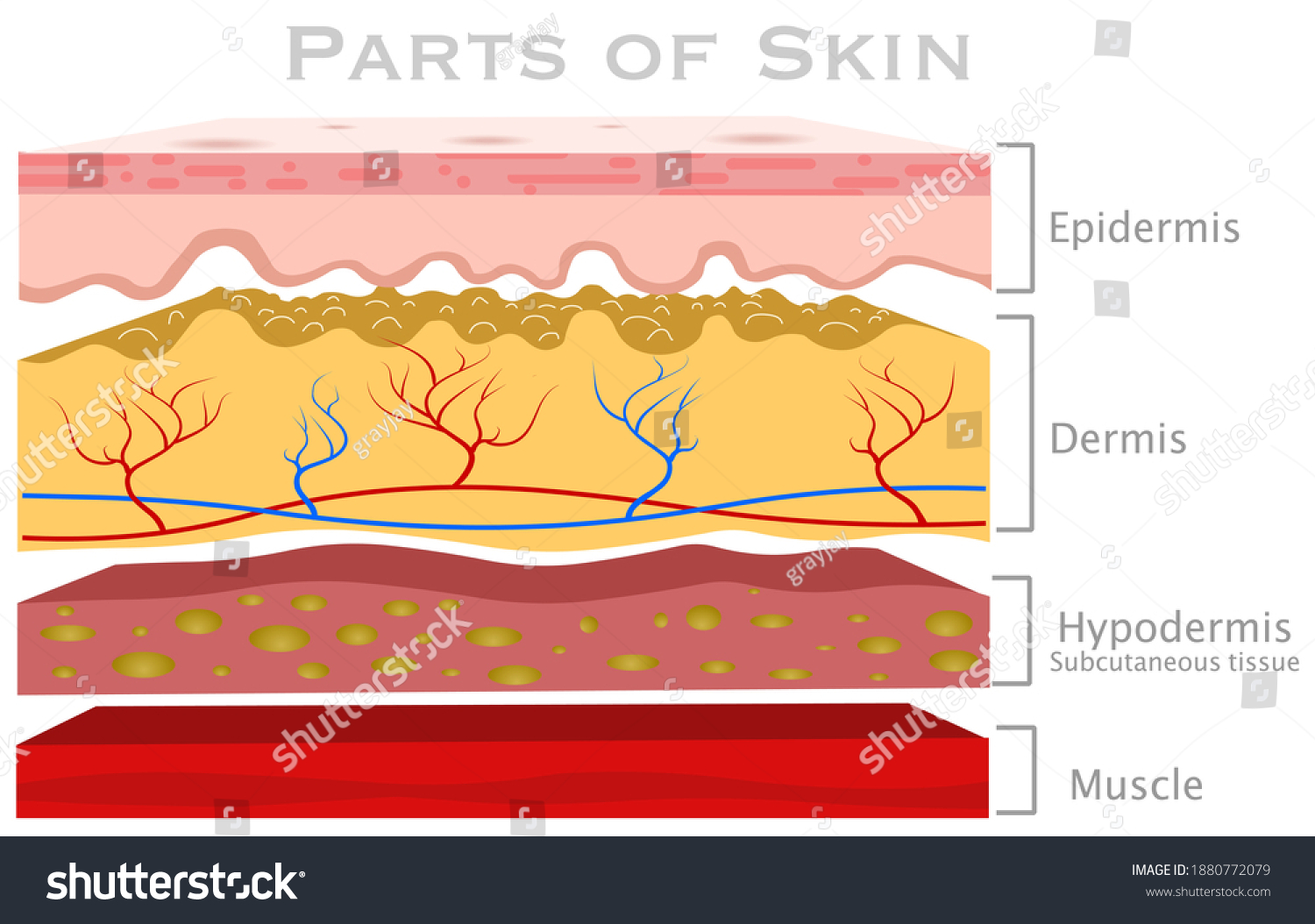Glabrous skin plays a vital role in human biology, acting as a unique type of skin that lacks hair follicles and sebaceous glands. This specialized skin is found in specific areas of the body and serves critical functions for thermoregulation, sensation, and protection. If you're curious about what glabrous skin is and how it impacts your overall health, this article dives deep into the science behind it, offering expert insights and reliable information.
While most of the human body is covered in hairy skin, glabrous skin stands out due to its distinct characteristics. Found in areas such as the palms of the hands, soles of the feet, lips, and parts of the genitalia, glabrous skin is adapted for specific purposes that are essential for daily life. Understanding its structure and function can provide valuable insights into how our bodies function at a microscopic level.
This article aims to explore the intricacies of glabrous skin, its evolutionary significance, and its implications for health. Whether you're a biology enthusiast, a healthcare professional, or simply curious about your body's unique features, this comprehensive guide will answer your questions and provide actionable insights. Let’s begin by examining the structure and characteristics of glabrous skin.
Read also:Experience The Magic A Complete Guide To Pine Knob Concerts And Entertainment
Table of Contents
- What is Glabrous Skin?
- Anatomy and Structure of Glabrous Skin
- Functions of Glabrous Skin
- Evolutionary Significance of Glabrous Skin
- Common Disorders Affecting Glabrous Skin
- Care and Maintenance of Glabrous Skin
- Scientific Research on Glabrous Skin
- Health Implications of Glabrous Skin
- Conclusion
What is Glabrous Skin?
Glabrous skin refers to the smooth, hairless skin found on certain parts of the human body. Unlike hairy skin, which contains hair follicles and sebaceous glands, glabrous skin lacks these features. Instead, it is densely packed with sweat glands and mechanoreceptors, making it highly specialized for its roles in sensation and thermoregulation.
This type of skin is predominantly found in areas such as the palms of the hands, soles of the feet, lips, and parts of the genitalia. Its unique structure and function make it an integral part of the human body's physiological processes. Understanding glabrous skin is essential for comprehending how the body interacts with its environment.
Glabrous skin is not only unique in its appearance but also in its evolutionary adaptations. It has evolved to enhance grip, improve tactile sensitivity, and regulate body temperature. These functions make it an indispensable component of human anatomy.
Anatomy and Structure of Glabrous Skin
Layers of Glabrous Skin
Glabrous skin consists of three primary layers: the epidermis, dermis, and hypodermis. Each layer plays a specific role in the overall function of the skin.
- Epidermis: The outermost layer, which provides a protective barrier against environmental factors.
- Dermis: The middle layer, containing blood vessels, nerve endings, and sweat glands.
- Hypodermis: The innermost layer, composed of fat and connective tissue, which helps insulate the body and store energy.
These layers work together to ensure the proper functioning of glabrous skin, making it resilient and adaptive to various conditions.
Unique Characteristics of Glabrous Skin
One of the most notable features of glabrous skin is its high density of mechanoreceptors, which are responsible for detecting pressure, vibration, and texture. This makes it exceptionally sensitive to touch, allowing for precise motor control and tactile feedback.
Read also:Discover The Magic Of Wiltern Theater Los Angeles A Timeless Cultural Gem
Additionally, glabrous skin contains a high concentration of eccrine sweat glands, which play a crucial role in thermoregulation. These glands produce sweat to cool the body during physical activity or in hot environments.
Unlike hairy skin, glabrous skin lacks sebaceous glands, which produce oil to moisturize the skin. As a result, it relies on other mechanisms to maintain hydration and prevent dryness.
Functions of Glabrous Skin
Sensory Functions
Glabrous skin is highly specialized for sensory perception. It contains a variety of mechanoreceptors, including Merkel cells, Meissner's corpuscles, Pacinian corpuscles, and Ruffini endings. Each type of receptor responds to different types of stimuli, enabling the skin to detect a wide range of tactile sensations.
This sensory capability is essential for activities such as gripping objects, typing, and walking. The high sensitivity of glabrous skin allows for precise control and feedback, making it indispensable for daily life.
Thermoregulation
Glabrous skin plays a critical role in maintaining body temperature through its sweat glands. Eccrine sweat glands, which are abundant in glabrous skin, produce sweat that evaporates from the skin's surface, cooling the body in the process.
This function is particularly important during physical exertion or in hot environments, where the body needs to dissipate excess heat to prevent overheating. By regulating temperature, glabrous skin contributes to overall health and well-being.
Evolutionary Significance of Glabrous Skin
The evolution of glabrous skin can be traced back to early primates, who developed this type of skin to enhance their ability to grasp objects and climb trees. Over time, glabrous skin became a defining feature of human anatomy, providing advantages in grip, sensation, and thermoregulation.
Studies suggest that the development of glabrous skin was influenced by environmental factors such as climate and habitat. For example, the increased density of sweat glands in glabrous skin may have been an adaptation to hot climates, where effective thermoregulation was crucial for survival.
This evolutionary adaptation underscores the importance of glabrous skin in human biology and highlights its role in shaping our species' ability to thrive in diverse environments.
Common Disorders Affecting Glabrous Skin
While glabrous skin is highly specialized, it is not immune to disorders and conditions that can affect its function. Some common issues include:
- Hyperhidrosis: Excessive sweating, often caused by overactive sweat glands.
- Dryness: Lack of sebaceous glands can lead to dry, cracked skin if proper care is not taken.
- Neuropathy: Damage to the nerve endings in glabrous skin can impair sensation, leading to numbness or pain.
Treating these conditions often involves a combination of lifestyle changes, topical treatments, and medical interventions. Early diagnosis and management are key to maintaining the health of glabrous skin.
Care and Maintenance of Glabrous Skin
Proper care of glabrous skin is essential for maintaining its function and preventing disorders. Some tips for caring for glabrous skin include:
- Keeping the skin hydrated with moisturizers specifically formulated for sensitive areas.
- Using mild soaps and avoiding harsh chemicals that can irritate the skin.
- Wearing breathable footwear to prevent excessive sweating and moisture buildup.
- Managing stress and anxiety, which can exacerbate conditions like hyperhidrosis.
By following these guidelines, individuals can ensure that their glabrous skin remains healthy and functional.
Scientific Research on Glabrous Skin
Recent scientific studies have shed light on the complex mechanisms underlying glabrous skin. Researchers have discovered new insights into the role of mechanoreceptors in tactile perception and the regulation of sweat production. Advances in imaging technology have also allowed for a deeper understanding of the skin's structure at the microscopic level.
These findings have significant implications for the development of treatments for conditions affecting glabrous skin. For example, new therapies for hyperhidrosis and neuropathy are being explored, offering hope for individuals suffering from these conditions.
As research continues, the scientific community is uncovering new ways to enhance the health and function of glabrous skin, paving the way for improved quality of life.
Health Implications of Glabrous Skin
Glabrous skin has far-reaching implications for health and well-being. Its role in thermoregulation, sensation, and protection makes it an essential component of human physiology. Disorders affecting glabrous skin can have a significant impact on daily life, from impairing manual dexterity to causing discomfort and pain.
Maintaining the health of glabrous skin is crucial for preventing these issues and ensuring optimal function. By understanding its structure, function, and care requirements, individuals can take proactive steps to preserve their skin's integrity and avoid potential complications.
Conclusion
Glabrous skin is a remarkable adaptation that plays a vital role in human biology. Its unique structure and function make it indispensable for activities ranging from gripping objects to regulating body temperature. By understanding the anatomy, functions, and care requirements of glabrous skin, individuals can take steps to maintain its health and prevent disorders.
We encourage you to share this article with others who may benefit from its insights and to explore related topics on our website. Your feedback and questions are always welcome, so feel free to leave a comment or reach out to us directly. Together, we can deepen our understanding of the human body and its incredible capabilities.

